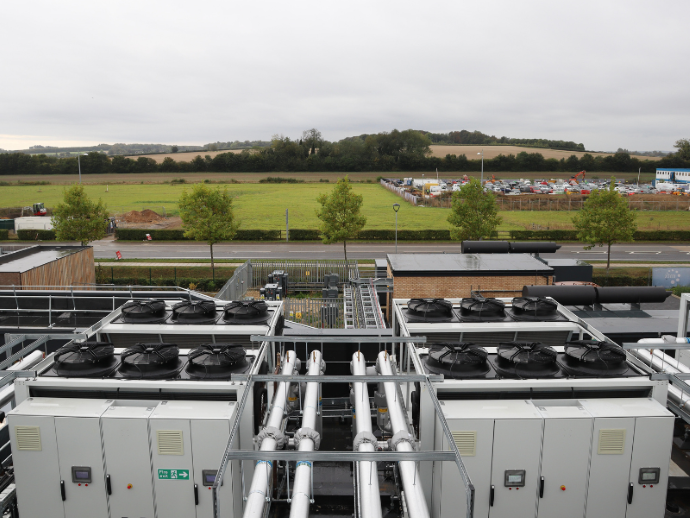A sophisticated system of photovoltaic solar panels and heat pumps has been installed in the Cambridge Movement Surgical Hub to provide the domestic hot water, heating and the cooling for the entire building.
This, alongside other measures including reducing single use plastics, a sophisticated restocking and ordering system ensuring that nothing is wasted, and a pilot study to use reusable surgical gowns are part of helping CUH reduce its impact on the planet.
The Hub specialises in orthopaedic surgery and has been built to help cut waiting lists for routine orthopaedic operations – such as knee and hip replacements – and create a new surgical centre of excellence.
The technology that heats and cools the building combines solar roof panels and the power of three large heat pump modules with unique computer-controlled electronics – all built locally.
Solar power is a renewable energy source that produces no harmful greenhouse gas emissions in operation.
The on-board computer-controlled power electronics provide the essential balancing between heating and cooling – designed to deliver both high efficiency and resilience across all weather conditions.
CUH energy and sustainability manager, Richard Hales, explains:
“The hub’s heating and cooling system has been built with energy efficiency at its heart.
“The system is innovative not just for its practical modularity and direct connection to approximately 80kW of roof-mounted clean solar energy, but also the way the whole system is managed sets it apart.”
During summer time when the sun is really shining we’re hoping that this whole unit will be running significantly off those panels.”
The Trust was the first in the country to use this innovative, integrated and locally developed technology when it installed a similar system in the Rosie Maternity Hospital in 2021.
The learning from the Rosie Hospital project has now been fed into the Cambridge Movement Surgical Hub’s more extensive and much bigger system.
For Fred Robinson, consultant orthopaedic surgeon and clinical lead for the Hub, this green thinking is hugely important. He said:
“I’m very keen that we are genuinely on a trajectory to net zero. I think we all feel that’s very important. Because, as we know, healthcare contributes around 5% to the country’s carbon emissions, so the more we can reduce that, the better for us all.”
Reducing the carbon emissions that the Trust has direct control over is a crucial element of CUH’s Action 50 Green Plan.
The trust has set the target of halving its carbon emissions by 2032, (from a 2019/20 baseline) and become a net-zero organisation by 2045.
This includes measures to reduce direct carbon emissions through how we manage our buildings and services, and saving resources by reusing, repairing and recycling wherever possible.
Next year, a state-of-the-art solar panel project which will supply renewable energy to Addenbrooke's and the Rosie Hospitals will be coming online. This is situated at Babraham Road Park and Ride, and will reduce CUH’s electrical carbon footprint by approximately 400 tonnes per year.
The specialist children and cancer hospitals for the East of England - Cambridge Children’s Hospital and Cambridge Cancer Research Hospital – being planned for the Cambridge Biomedical Campus, will be low carbon and electric powered facilities, both designed to ensure maximum natural light and access to outdoor spaces, as part of the Trust’s plan to help deliver a net zero NHS.
Image: Heat pumps on Surgical Hub.


